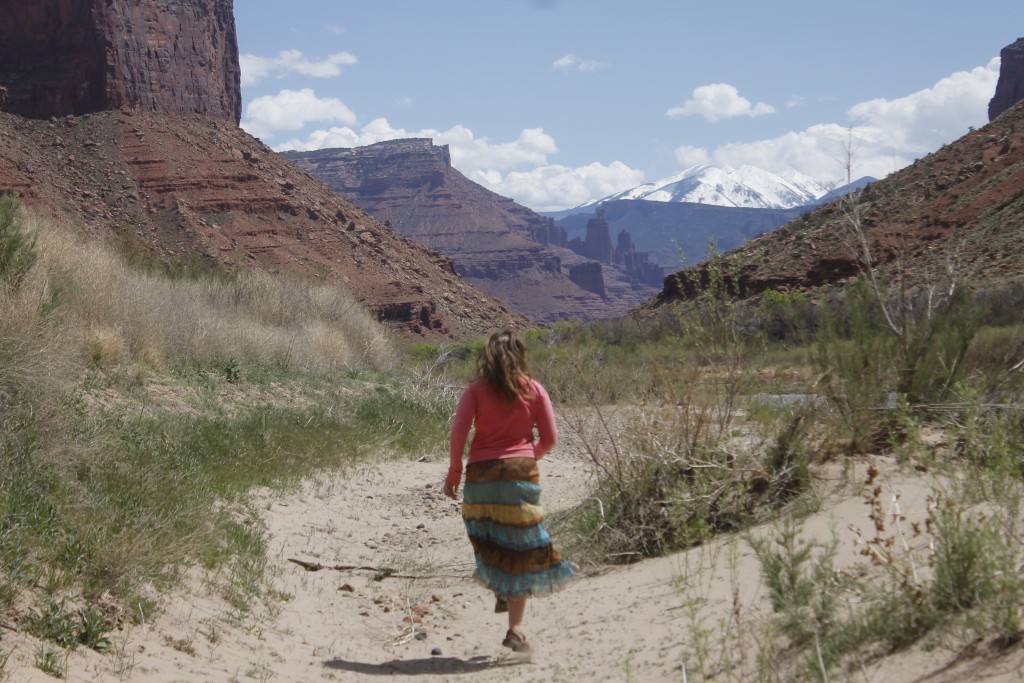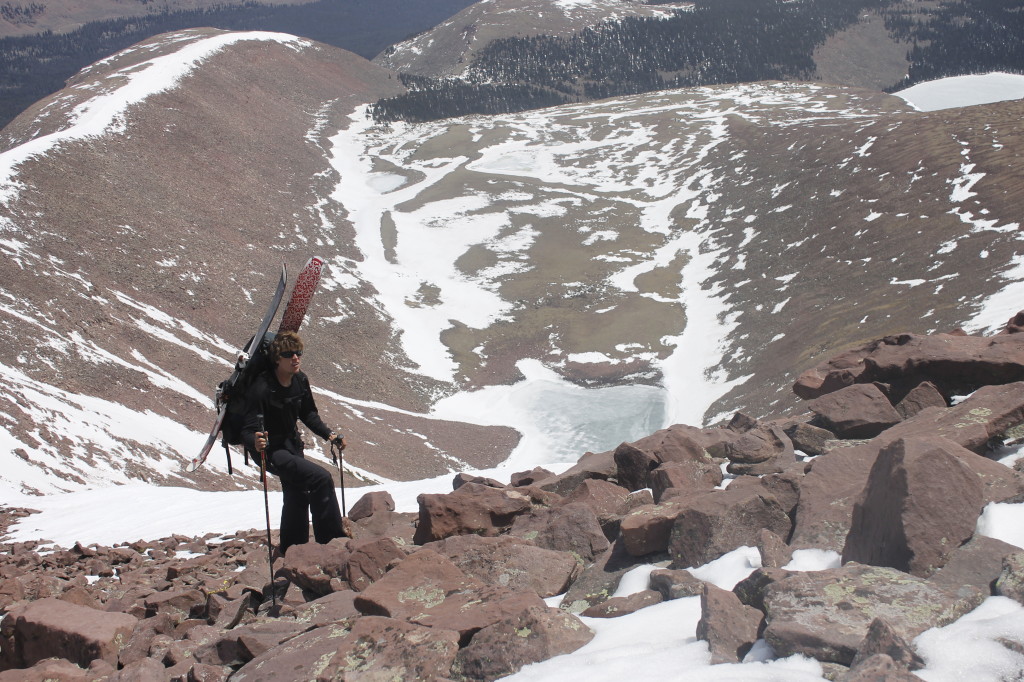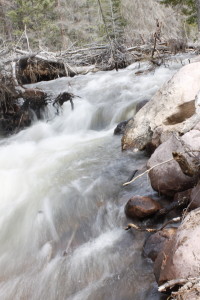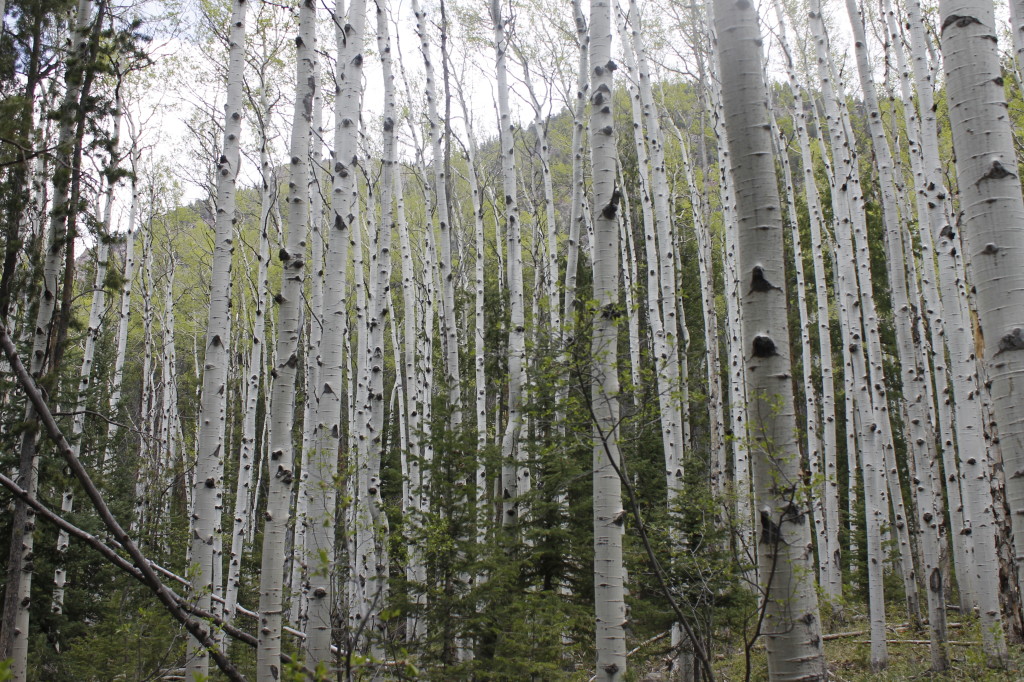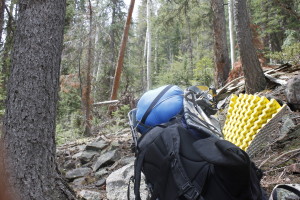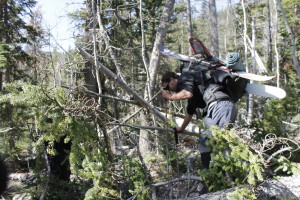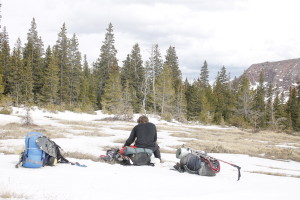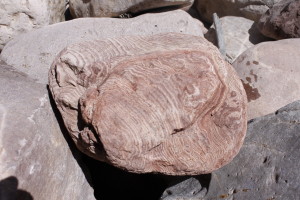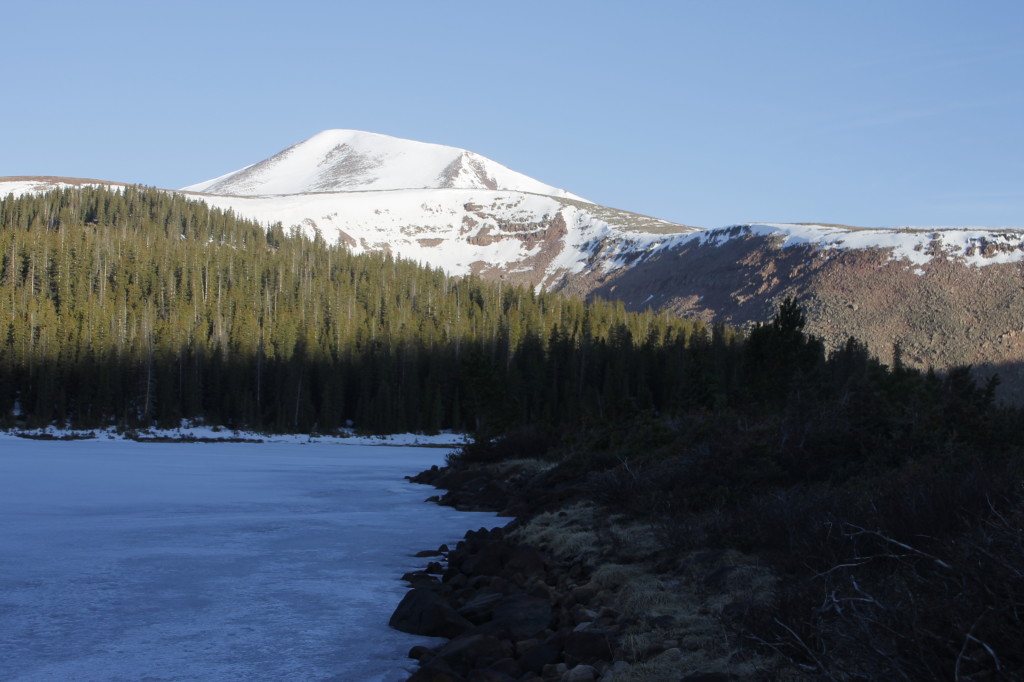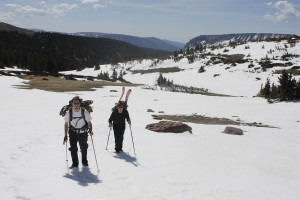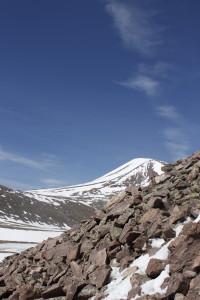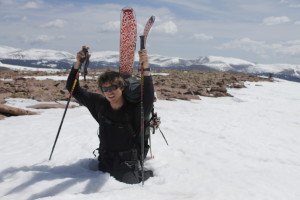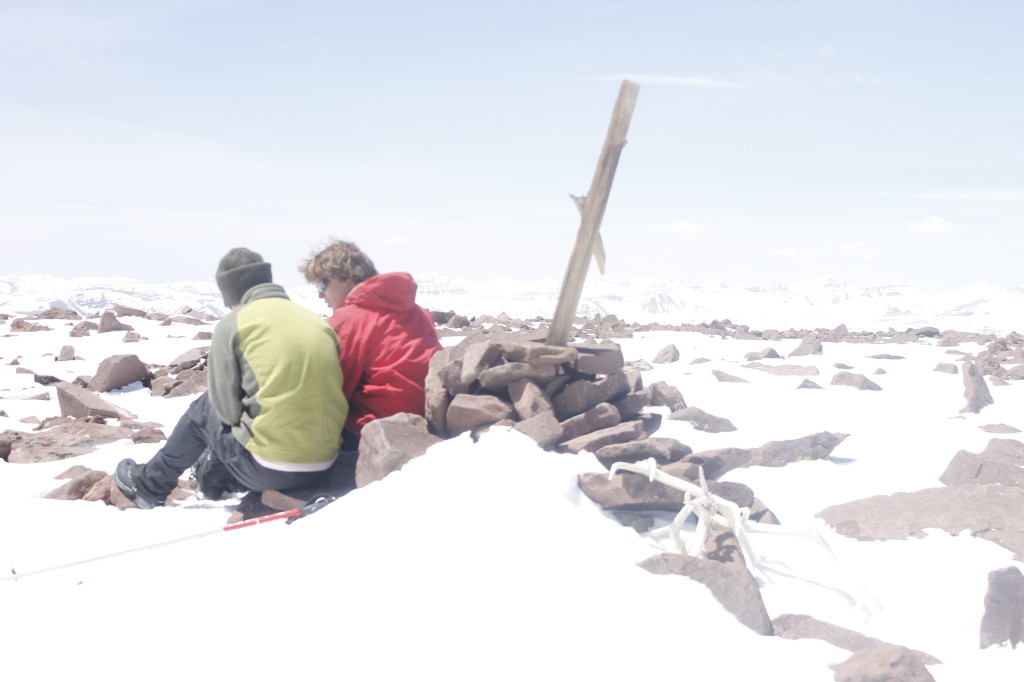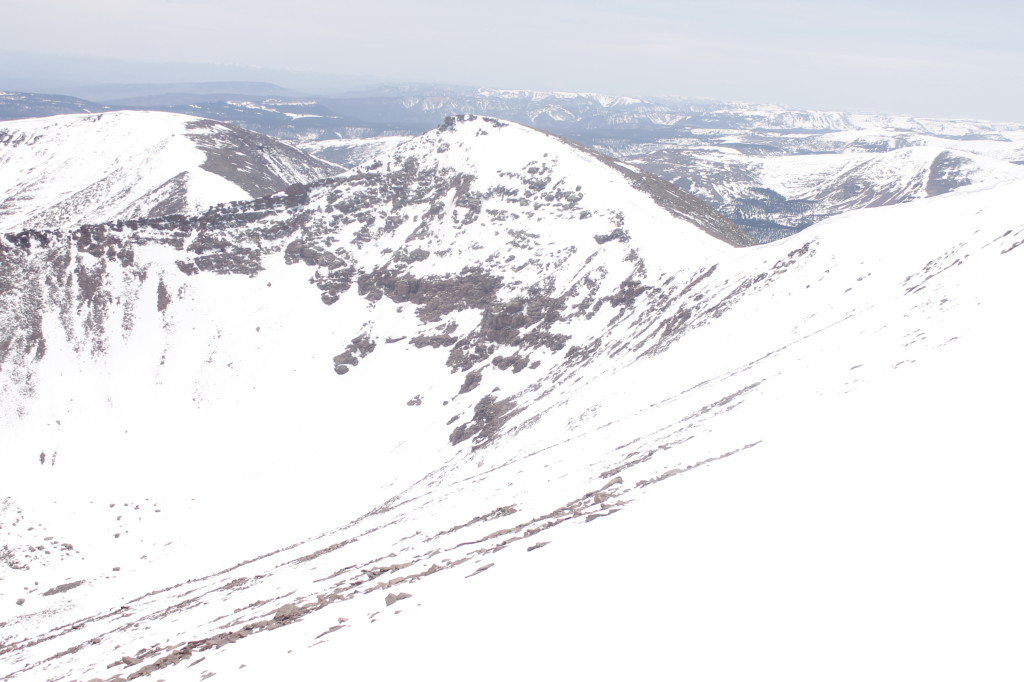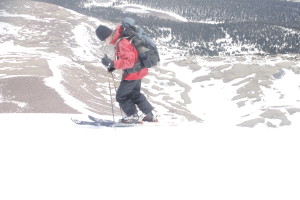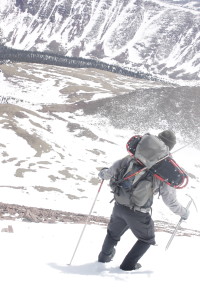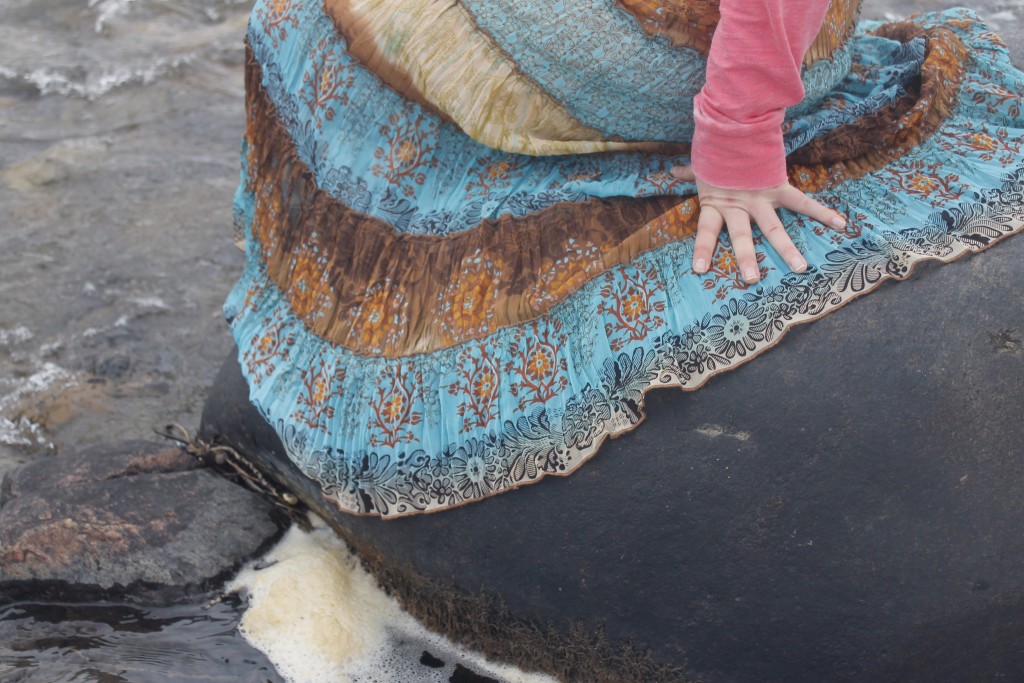
It is a quiet joy to see the flash of dress billow with her movements as she picks her way along the desert wash.
This is Utah.
The scale and severity of the landscape always halt me. Here are the ramparts of scorched red-rock, cutting me off from the table land. Here is the muddy Colorado, writhing between the canyon walls like some vast serpent. There lie the snow-topped mountains, half hidden in clouds. At my feet, a delicate flower emerges out of cactus thorns.
And then I must consider this extra splash of color, moving along the debris behind me.
I hadn’t seen LeAnn since November, and though we hadn’t officially been together for a while, I was thrilled when she agreed to join me on a trip to canyon country. Neither of us was seeing anyone at the time, and it is more fun to have a fellow traveller that you are in tune with.
By in tune, I don’t necessarily mean that we resonate at the same frequency — not exactly. LeAnn will wear dresses on the trail, talk about home health remedies, stop to coo over a toad that I’d practically stomped on because I was looking at the horizon, frequently calls me “The Old Man.”
I got the name because I tend to go on curmudgeonly rants about everything. It doesn’t take much to get me rolling about the insipidness of pop music, the shittyness of movies, the selfishness I see society encourage in people. The only thing missing is some heavy oaken cane for me to shake at the world in general disproval. The Old Man goes on rants, worries about safety, loses things, and dodders along the terrain, lost in thought.
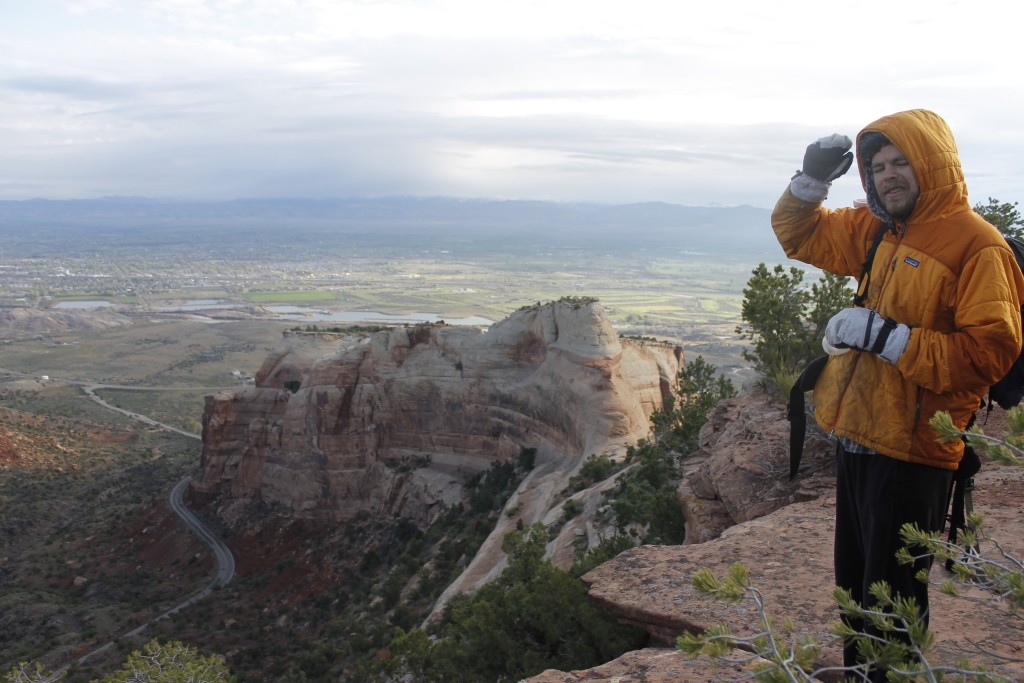
No, there are plenty of differences between us two, but often these different frequencies find odd harmonies. Each of us sees and thinks differently than if we went out by ourselves. We do share the common goal of trying to find some measure of freedom and joy in nature.
The sense of freedom is what I enjoy about seeing LeAnn take to the trails in colorful dresses. Not much is sacrificed in terms of practicality here, excepting the occasional snag from a sagebrush or juniper branch, an added difficulty for boulder scrambles. But then, sometimes the way we do a thing is as important as the thing in itself. The rhythm of the swishing skirt makes a fine contrapunto to the desert music and somehow seems as vital as the gallon jugs of water that I’d filled earlier.
“Has joy any survival value in the operations of evolution?” writes naturalist philosopher Edward Abbey, in his book Desert Solitaire. “I suspect that it does; I suspect that the morose and fearful are doomed to quick extinction. Where there is no joy, there can be no courage and without courage all other virtues are useless.”
Abbey was talking about desert toads that reveal themselves to predators with their loud songs. The trait is seemingly maladaptive, but has value in attracting mates. Whether or not the toads appreciate their songs and find that they give meaning to their lives — I leave that question to toad scholars. What I don’t doubt is that we humans enrich ourselves when we can express what we are.
Expressing what we are sounds simple enough on paper. But when you are an Old Man, you see plenty of complications. Truth is one. It is no good to shout from the rooftop if you are shouting lies. But some people are so quick to respond or react to events that I can’t believe that they really know whether they are shouting truth, gibberish or something worse. There is also the need to make your mode of expression your own, not carrying someone else’s banner, retweeting some cliche, ignorant of what it actually stands for.
At least toads don’t have to worry about their sweet songs being co-opted into advertisements by a multinational corporation. Oh wait. Look at the beer shilling frogs in the ‘90s TV commercials. “Bud!” “Weis!” “Er!”
Expression is easy enough, but in order to make it into “self expression,” there needs to be some self involved, not just a collection of reactive impulses masquerading as a self.
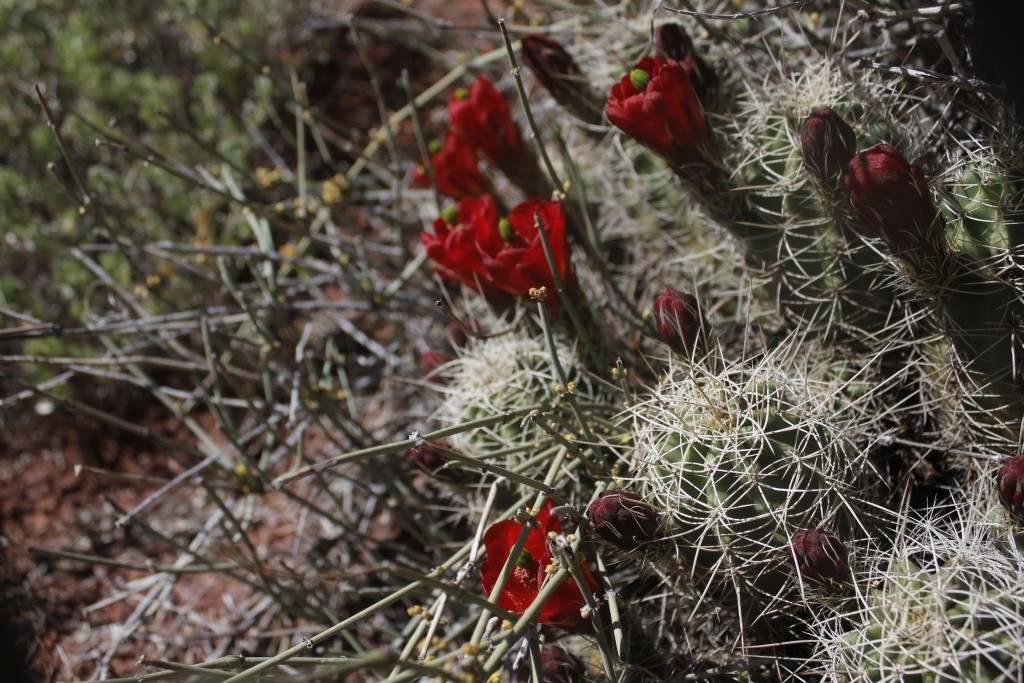
I’ll leave open the possibility that self can be enormously complicated, likely inextricable from the world around. One of the beautiful things about being human, is that we can take others’ ideas, (art, literature, conversation or whatever) process those ideas and make them our own. We can eat a banana without becoming a banana, but still benefit from the nutrients within. The same goes for how we process nature. We can commune with it, and process it on our own terms.
What I see with modern communication is that it throws so much information at us, much of it manipulative, that our internal processor is hard-pressed to keep up. Internet access, social media, smart phones and corporate advertising beat at the doors to the self, pinging at us, pinging at us, dumping so much content that there is no time to it all absorb into self-ness. I picture a virus inserting a foreign strand of genetic code into our own identity. Suddenly, when we try to express our own ideas, we only have the tools to spew out more of the virus. And then the virus infects others. And revenue increases.
The hellish, confining nature of this system makes us long for something different, maybe a nice descent into addiction, or if that seems too extreme, a pleasant walk in nature, where we believe that we won’t hear the racket from the money-driven noise machine. Perhaps, in that place of contemplation, a clearer vision of the self will emerge.
But the advertisers and other purveyors of bullshit know how dangerous that is. When you run for the hills, they will be hot on your heels eager to subvert your desire for communion with nature into a desire to make purchases.
The purveyors tell you to snap your picture, tag yourself, and move on, making our interactions with the real world as superficial as they are in the virtual one. Perpetual distraction and dissatisfaction are good because they feed consumption and make dollars flow.
The purveyors take your warm feelings for natural beauty and redirect them into brand loyalty. They pervert the profile of Half Dome into the North Face logo; they repurpose the grandeur of El Capitan into Apple’s El Capitan operating system.
This year, Subaru clinched the title of “Sole automotive partner of the National Park Service’s Centennial”* Going to Yellowstone? Pollute it in a Subaru!
“Our national parks embody an undeniable sense of freedom,” reads the opening to Budweiser’s partnership statement/branding opportunity with the Parks Service.*
New advertising policy put out by Parks director Jonathan Jarvis will soon allow even more opportunities for major park donors like Coca Cola, Humana, and REI to fly high their banners from from Acadia to Joshua Tree. **
If the idea of festooning a National Park with corporate logos leaves a bad taste in your mouth, consider the hordes of tourists who already walk those trails decked out in their shiny Arc’teryx shells, or paramilitary Under Armour tops to take selfies, cybernetic music blasting out of earbuds. There is expression here alright, but not self expression. It is hard to see any concept of selfhood in those who drape themselves in symbols that belong to others.
Because they have not bothered to craft their own identities, they grab all the more desperately for some T -shirt with a Jeep Grand Cherokee, or list of Tweety Bird witticisms. There’s are plenty of prefab identities available for you to buy. You can pick one one up for $15 at your local Wal Mart.
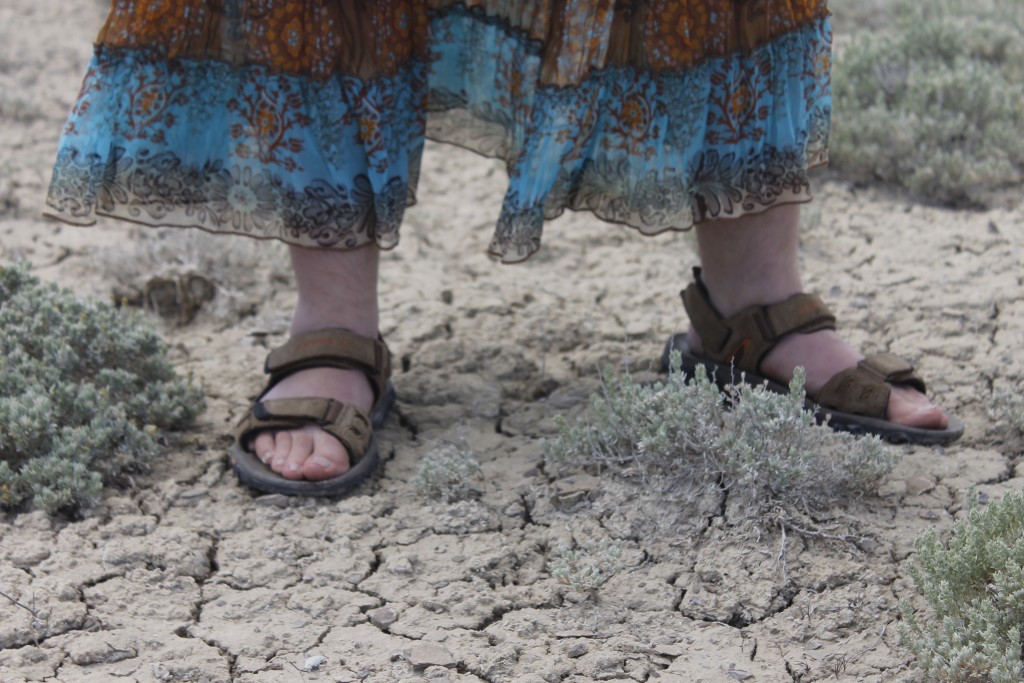
And I’m not just picking on poor slobs who couldn’t afford the latest and greatest performance-wear.
Naturally, many of us begin to believe (but would never admit) that the more expensive the clothes we wrap ourselves in, the more value we accrue. Such walking retail advertisements have bought into a finer-crafted identity, with higher thread count and built in iPhone sleeve.
What seems especially crass to me about the omnipresence of corporate symbols in national parks, is that they remind me about the forces of money, still out there pillaging the environment I am now trying to enjoy. Even if they never get around to, say, fracking the Grand Canyon, human want, driven by relentless advertising, will ensure that there will be plenty of smog to go around, more bright lights, more pressure for billboards, helicopters and luxury lodging crowding out the natural world.
I shouldn’t let it get to me. I should just look at the canyons now. Watch the graceful eagle in flight — not the bro posturing in the camo Under Armour hoodie. Relax.
The problem is that this march of advertising, of posturing, self-important bullshit does not want me to not pay attention. It screams at me to see it, to read its words, to acknowledge its existence, when I came out here to acknowledge the existence of something far more subtle and profound. It is hard to hear truths whispering like leaves of grass when a car salesman screams into your other ear.
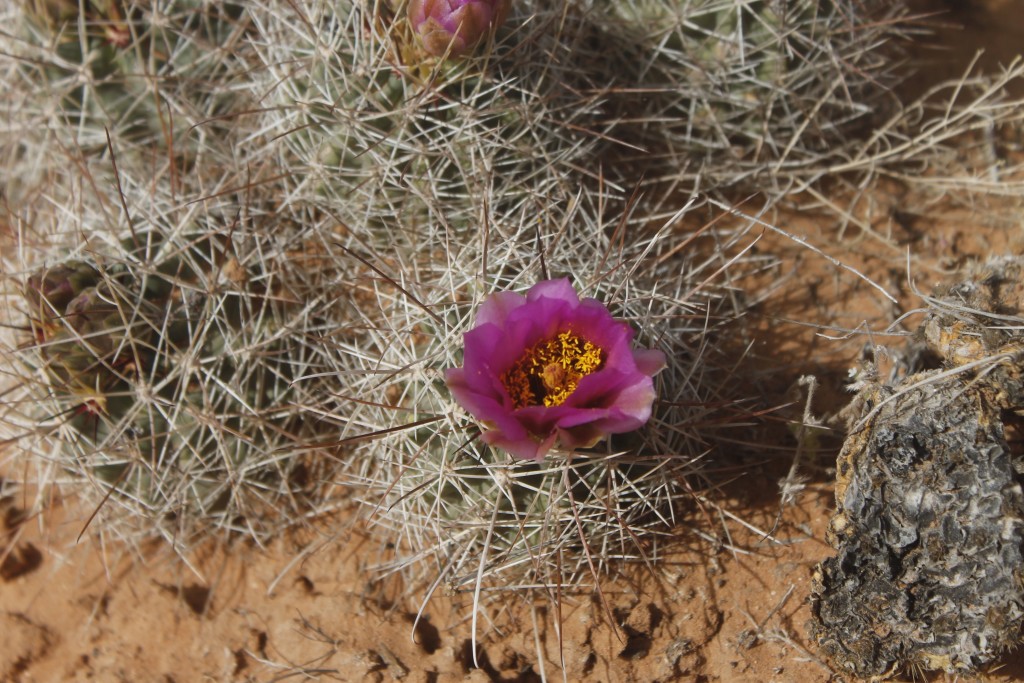
And I do believe that many of us get so caught up in broadcasting ourselves (or rebroadcasting others) that we don’t spend enough time listening. We demand others see us and become addicted to their validation (some run for president.) If validation is the best thing that comes from self-expression, then the matter of whether such expression is a true expression of the self becomes secondary.
Above all, I think that people who want to escape the grind should quiet down for a minute out there instead of bringing the grind and all its tedium into nature. See what it feels like to walk a mere hour without saying a word or without looking at a screen. Note what thoughts arise.
I’m not the first person to complain about what people wear, whether on the golf course or in the wilderness.
In Backwood’s Ethics by east coast naturalists Guy and Laura Waterman, the authors suggest that people who seek out nature should tone down their wardrobes. A neutral-colored tent is better than a flashy orange one, they argue. A bright-colored tent stands out over long distances, and draws attention to itself, clashing, instead of harmonizing with the outside environment. The argument resonated with me, even though I’d recently bought a pair of day-glo ski pants partly because, hey, they looked cool.
Even as one part of me nodded along with the Waterman’s curmudgeonly wisdom, I also thought about how many animals are as vain, or far vainer than the Eddie Bauer acolytes or North Facers who walk the trails.
If a male cardinal (the bird, not the clergymen) struts out on a branch in his finest red feathers, shouldn’t we call him out on his vanity? If he insists on chirping his song from the highest branches, why should he be less annoying than that dude with the pocket speaker system playing Top 40 singles near the waterfall? If the birds sing because of some reel imprinted in genetic memory, it’s all the more reason to disdain their unoriginality. The same goes for those loud toads Abbey mentions. They are just another pack of attention mongers.
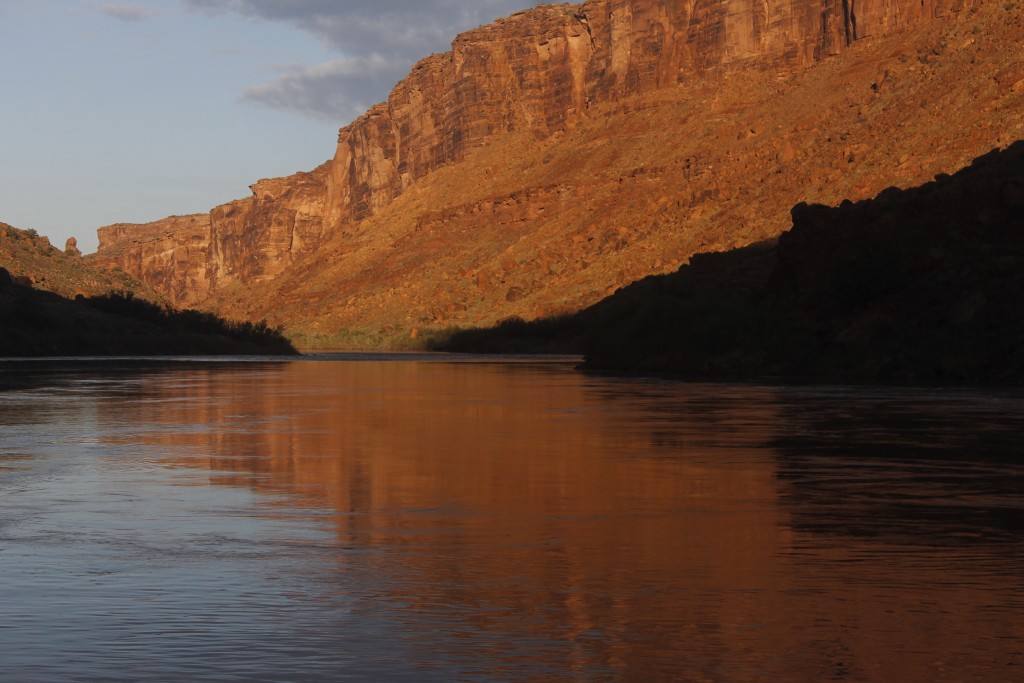
I’ll check myself before my argument becomes any more absurd. It is easier to acknowledge that there are times, when it is appropriate to call attention to ourselves in nature, just as there are times when it surely isn’t. Artists like Cristo and Jeanne-Claude who once erected thousands of orange gates to in Central Park, used a bold sense of style to complement the winter landscape, not diminish it.
We humans still rely on expression to project ourselves, sing ourselves, and build bonds between others of our kind. There is a time to shut up and let nature do the talking, and many people still need to learn how. Nonetheless, we humans are also entitled to do some talking of our own, especially if we are trying to express some understanding that we developed in the time that we shut up and listened.
LeAnn, who has taught me the names of many plants and animals, shown me wild edibles and explained the different life processes happening around me, has done plenty of listening to nature. She also understands, intuitively, the need for joy. Joy is the expression that I see in the dress moving through the desert. I see it, and believe it is her own. I permit myself to enjoy it also.
Joy need not deny that terrible things happen in the world or that difficult times can test the very core of what we believe in ourselves. It is not the unobtainable idea of a flawless world as dreamed by an advertising exec.
The desert won’t tolerate such fantasies for much time. Just keep walking into the canyons and away from your car. See how long you can believe the comforting platitudes.
You’ll learn to step carefully, if you’re going to make it through alive. You’ll need to learn how many ways the desert can kill you and how indifferent it is to your fate.
But if you are going to live, you might also learn to take joy at finding an oasis to drink from or finding a succulent prickly pear to ea., You would do well to create some kind of narrative that gives a purpose to your survival efforts.
Sometimes life needs to shine forth, unafraid and unapologetic amidst the landscape, and even bright colors can complement the world around, not detract from it.
While the sight of corporate logos on the trail speaks to me of commodification, the sight of the bright dress on the trail speaks to me of freedom. It reinforces the fact that a landscape, which offers hardship, danger and privation, can also be a place of joy — if we rise to meet it.
Links:
* http://findyourpark.com/partners
**https://www.washingtonpost.com/news/powerpost/wp/2016/05/09/yosemite-national-park-brought-to-you-by-starbucks/

